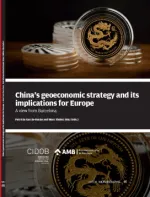The New Silk Road: from Eurasian corridor to global Chinese foreign policy initiative

The New Silk Road, launched by Chinese President Xi Jinping in 2013, has had a variety of English names – "One Belt, One Road", the "Belt and Road Initiative" and now "the BRI”. Initially, it was conceived as the development of a great Eurasian corridor that would help China extend its economic influence towards Central Asia, Europe, Southeast and South Asia, and some parts of Africa. Two routes were planned for the corridor: one, over land, more or less follows the old Silk Road from China to Europe via Central Asia and the Middle East; the other is a sea route from China to the Mediterranean, passing through South Asia and East Africa.
China had other complementary motivations, as well as opening up a Eurasian corridor. On the one hand, the New Silk Road offered a new means of export for its vast excess capacity in sectors like steel and cement. At the same time, China also sought to promote the development of its inland areas, which were more economically backward than the coastal regions.